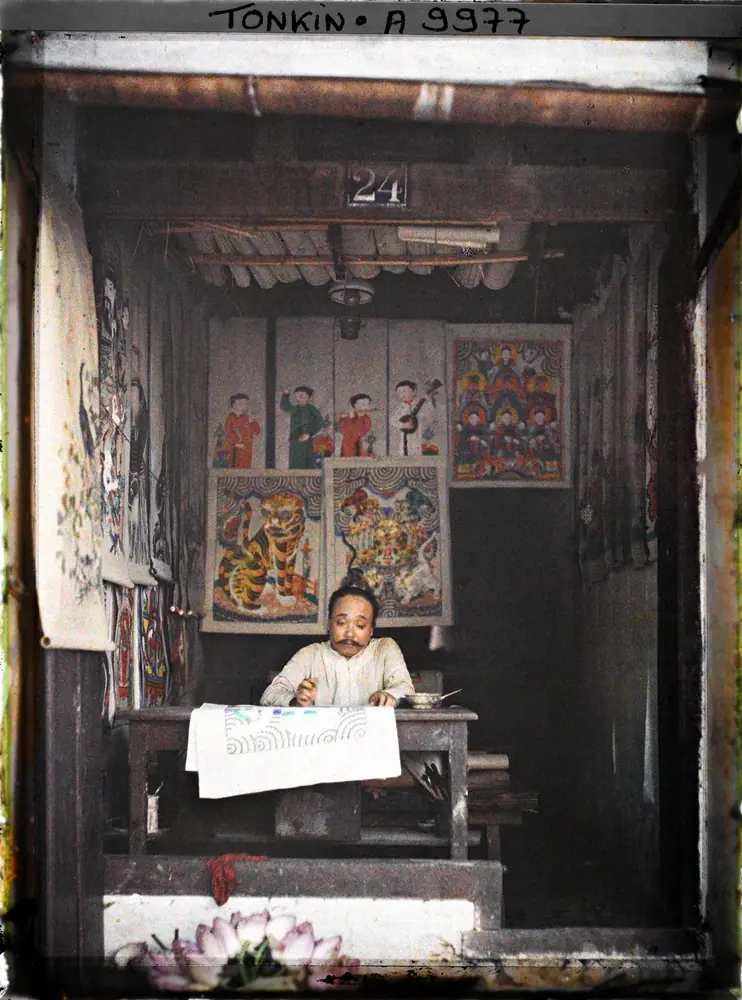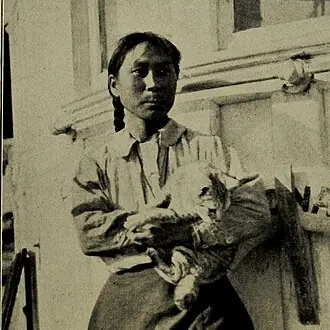
On June 1st, 1916, a captivating moment was captured in a photograph at 24 Jules Ferry Street, Hanoi (known today as Hàng Trống Street). The image shows a skilled artisan at work, deeply engrossed in painting traditional folk art. The artisan, sporting a fine moustache, is captured passionately creating beautiful paintings, surrounded by vibrant works such as Lý Ngư vọng Nguyệt (Carp Looking at the Moon), peacocks, Quan Hổ (Tiger God), and Tố Nữ (The Lady). This image, taken by Léon Busy, offers a rare glimpse into the life and craftsmanship of a time-honored tradition that has played a significant role in Vietnam’s rich artistic history.
Hàng Trống painting is one of the three most iconic types of traditional Vietnamese folk art, alongside Đông Hồ and Kim Hoàng paintings. Hàng Trống, located in Hanoi, is considered the second-largest center for folk painting production in Vietnam, following Đông Hồ. Along with Đông Hồ and Kim Hoàng, Hàng Trống has contributed greatly to the distinct, colorful, and vibrant culture of Vietnamese folk art, making it recognized both within the country and internationally.
The Hàng Trống paintings have long been revered for their unique style, depicting various elements of life, folklore, and religious symbolism. They are often seen in sacred places like temples, shrines, and altars, adding spiritual and cultural value to these locations. These paintings have also found a home in the most prestigious private collections and museums around the world, highlighting their significance in global art history.
Over the years, Hàng Trống paintings have become synonymous with the beauty and diversity of Vietnamese folk art. Their bright colors, intricate details, and symbolic representations capture the essence of Vietnamese culture and continue to influence generations of artists. The legacy of Hàng Trống, alongside Đông Hồ and Kim Hoàng paintings, has not only made a mark on Vietnam's artistic heritage but has also gained recognition internationally, making their way into the collections of art lovers around the globe.
Today, you can still find Hàng Trống paintings adorning the walls of temples, shrines, and art galleries, both in Vietnam and across the world. They serve as a testament to the enduring legacy of Vietnamese folk art, representing the creativity, culture, and history of the Vietnamese people.
Photo by Léon Busy



























